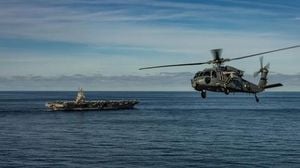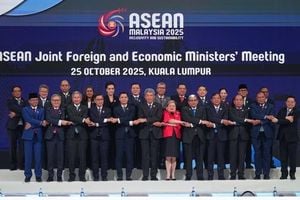Significant progress has been made lately at the intersection of artificial intelligence and seismology, as researchers have adapted audio processing technologies used for automatic speech recognition to predict earthquake faults. The innovative study focuses on seismic waveforms recorded during the collapse of the Kīlauea volcano’s caldera, providing compelling evidence of how machine learning can significantly improve our ability to anticipate seismic activity.
Using the Wav2Vec-2.0 model, initially developed by Facebook AI Research for decoding spoken language, researchers trained this deep learning architecture to interpret seismic data, effectively treating ground vibrations as audio signals. The model was pre-trained using seismic waveforms associated with caldera collapse events, allowing it to predict surface displacements indicative of fault movement.
This advancement is particularly significant as the mechanics of earthquakes present unique challenges for traditional modeling techniques. Large faults exhibit long repeat times—ranging from decades to centuries—complicates the availability of comprehensive datasets capable of encapsulating entire loading cycles. By utilizing deep learning methods previously tested on laboratory experiments, researchers have efficiently trained their model to glean insights from the compressed seismic signals.
Researchers focused on data collected between June and August 2018, during which time there were approximately fifty collapse events at Kīlauea, recorded with extensive instrumentation. The team assessed the model's ability to predict movements before they occurred, potentially providing warnings of subsequent seismic events.
Results from this application of deep learning were promising. Researchers found the model could accurately predict both the timing and magnitude of displacement based on continuous seismic measurements, outperforming previous regression techniques. Their approach showcased the specific predictive capability of the Wav2Vec-2.0 framework on two fronts: contemporaneous predictions—estimations made on current events—and future predictions of fault activity.
Interestingly, the Wav2Vec-2.0 model was found to handle nonstationary data more adeptly than traditional methods such as gradient boosted decision trees, offering insight at points where seismic activity measured via GNSS technology pointed to potential collapses. Although it struggled with certain future-time predictions, the innovations presented lay foundational work for future studies focused on enhancing prediction methodologies.
The authors noted, "The results demonstrate the ability to predict the onset of slip event, which is not possible with previous models." This encapsulation of progress unveils vast potential for employing artificial intelligence to expand our capacities for earthquake forecasting and safety measures.
With their findings, the research team emphasized the importance of bridging laboratory findings with field applications, showing promise not only for Kīlauea but for other active fault zones globally. By incorporating machine learning techniques developed for speech recognition, they signpost how interdisciplinary approaches could revolutionize traditional geophysical studies.
This research opens avenues for even more complex analyses, where models could be devised to predict the magnitude and location of future seismic events long term. While the challenges posed by noise inherent to volcanic regions remain, the exploration signifies remarkable advancements toward enhancing resilience against seismic hazards.
This breakthrough serves as inspiration for both geophysicists and machine learning researchers alike, pushing the boundaries of how we understand, anticipate, and potentially mitigate the impacts of natural disasters.



